What's New -Nov. 2025
Posted Friday, October 31, 2025
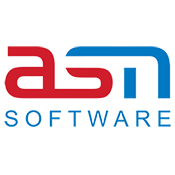
Sales
-
New Security Feature: #948 – Un-Lock Sale
A new security option (#948 – Un-Lock Sale) has been added to give tighter control over sales transactions.
When restricted, sales team members cannot unlock a sale, even if they have Security #93 – Lock Sales. This ensures stricter adherence to approved sales processes and reduces the risk of unauthorized changes.
Contract Screen
-
Colorado Dealers: New DR 2842 Form
A new Colorado DR 2842 – Supplemental Secure and Verifiable Identification form is now available.
Dealers can add this form to sales documents, helping ensure compliance with Colorado’s updated identification requirements.
-
New Feature: Spanish Arbitration Addendum Signature
A new eSign feature has been added to the Spanish version of the Arbitration Addendum, allowing customers to electronically sign the document for faster, paperless processing.
-
Washington Dealers: New LAW Form 553
Effective November 1, 2025, Washington dealers will have a new LAW® form 553 available: Washington Retail Installment Sale E-Contract Including Arbitration.
This updated form includes new disclosures and is designed to ensure compliance with Washington’s updated regulations for retail installment sales.
Reports
- New Feature: Custom Reports Auto-Refresh
Custom Reports data now auto-refreshes every hour. This caching speeds up report loading, especially for large datasets or during high server demand, and helps reduce delays caused by busy networks or slow queries.
If you think the data has changed since the last refresh, just go to the 'Custom Report' tab and right-click above line 10 where it says "Custom Report data refreshes every hour" to see the latest refresh time or manually refresh it (which can take up to 5 minutes).
We’re working on more improvements to make reporting faster and more reliable in the coming months.
-
New Feature: Automated Report Emailer Time Control
The Automated Report Emailer now allows you to set the exact time of day to send out scheduled reports (see line 5).
This enhancement gives you greater flexibility to deliver reports at the most convenient or business-critical hours.
-
New Feature: Include Former Sales Team in CRM Reports
In the Reports – CRM tab, you can now check the box on line 5 (BDR label) to include former sales team members who are no longer active in the system.
This enhancement provides a more complete historical view of sales activity and lead performance for reporting and analysis.
-
New Report: RO Declines
A new “RO Declines” report is now available to track any shop ROs with declined items.
To add it to your report list:
-
Right-click on a report button.
-
Navigate to the Shop category.
-
Find RO Declines and check the box to assign it to your list.
This makes it easier to monitor declined repairs and manage shop workflow efficiently.
Bookkeeping
-
New Feature: Inactivate Collection Category Items
You can now inactivate collection category items that you no longer wish to use, even if they were associated with inactive loans.
To use this feature:
-
Go to the Financed Loan or Collections tabs.
-
Open the Collection Category tab.
-
Click the new “Inactivate” button to disable the item.
You can also reactivate inactive items anytime if needed, giving you more flexibility in managing collection categories.
-
New Feature: 2025 IRS Form 1099-C for Charge-Offs
A new report and letter have been added under Finance Loan History in Bookkeeping to help prepare Form 1099-C filings for the 2025 tax year.
The IRS now requires auto dealers to file Form 1099-C for any canceled debt of $600 or more if the dealer is considered an “applicable financial entity.” This includes dealers offering in-house financing or operating through a Related Finance Company (RFC).
This new report makes it easier to track charge-off balances and generate the data needed for IRS compliance.
-
New Security Feature: Second Name on Write-Checks Tab
A new security option (#949) is now available to control the “2nd Name on Check” field.
When restricted, this prevents a software user from adding a second name in the Write a Check screen (line 8 – 2nd Name on Check field), helping maintain tighter control over check issuance.
Accounting
-
New Option: Edit SideNote Description
You can now edit the SideNote description entered on line 38 of a new loan. Simply locate the invoice in the ledger, click the new blue arrow on line 3 – Description, and update the text. The revised info will replace the original entry for clearer recordkeeping.
Latest System Update
-
The Upcoming version is 7.0.18.75 —Our newest update is rolling out in phases. If you don’t see it yet, no action is needed; it will arrive automatically. Once updated, you’ll have access to the latest features and improvements to keep your system running at its best.
Used car prices are revving up
Posted Friday, October 31, 2025

There's sticker shock, and then there's whatever is happening with America's used-car market. Prices for a slightly-less-than-new-car have been soaring over the past few years. Before the pandemic, the average price for a 3-year-old vehicle topped out at a little over $22,000. In 2025, the cost is upward of $31,000. And according to Edmunds, which tracks the car market, that number may soon sound like a bargain.
"I mean, it's kind of mind-boggling for anybody who had the pleasure or context of having bought pre-2020, right?" says Ivan Drury, the director of insights at Edmunds.
You may remember the used-car apocalypse nestled inside the whole-world apocalypse during the COVID-19 outbreak. Supply chain disruptions in new vehicle production, increased competition from rental car companies, and a surge in demand from consumers seeking to socially distance themselves from others behind the wheel caused a scramble for older vehicles. Like many things post-pandemic, the used car sector is not back to normal. The average price of all used car transactions is below its pandemic peak, but still thousands of dollars more expensive than it was six years ago. Prices are creeping up again, too: The most recent Bureau of Labor Statistics data shows they're up 6% over the past year.
"Those hangover effects from so much disruption from years ago, it's all playing out now," Drury says.
With tariffs in the mix and new car prices continuing to creep up, the future may be worse. The answer to the perennial question of when is the "best time" to buy a used car may now permanently be "there's no such thing as a best time." And when it comes time to get a car, new or used, hope you have some time to shop around.
Or as Drury puts it: "It's not just reestablishing your expectations, but coming to terms with today's new reality, which is unfortunately not in your favor."
To state the obvious, before a car can be used, it has to be new. So when there's a slump in new cars rolling off the lot, that hits the used vehicle market down the road. According to data from Edmunds, millions fewer new cars have been sold in the US in recent years. Sixteen to 17 million new cars were sold annually in the US from 2014 to 2019. From 2020 to 2022, that number fell to 13 to 14 million each year. Sales have been creeping back up — Edmunds estimates sales will finally surpass 16 million again this year — but even with the rebound, the ripple effects of the pandemic-era semiconductor shortage and other supply-chain and sales headaches continue to have an impact.
"Those vehicles never entered the vehicle ecosystem to become used vehicles for consumers, and that's the crux of the matter right now, it's that hole that was made," says Jeremy Robb, senior director of economic and industry insights at Cox Automotive.
There simply aren't as many people going to dealerships looking to trade in cars they bought new two, three, or four years ago. And if they are turning up, it's with vehicles that were more expensive in the first place because of pandemic-era pressures. Stephanie Brinley, an automotive analyst at S&P Global, says that because of supply chain issues, carmakers focused on "their most popular models and their most popular trim levels," which tended to be on the middle or high-end of their price range.
"So you have a combination of a vehicle that was more expensive in the first place and relatively low supply," Brinley says.
Leasing is a factor, too. Typically, about 30% new cars are leased every year, Robb explains, but that fell to about 17% in 2022. Automakers would rather customers simply buy a car outright — they make more off of it — so heightened consumer competition for a limited number of pricey new vehicles reduced the need for manufacturers to offer leasing terms, because they were selling premium cars for close to full price. Most leases mature in 36 months, at which point the car is often turned in and put on the used car market.
"The lease maturities have really been contracting over the past year and a half and will continue to contract," Robb says.
Apart from the pandemic, there are other generally consumer-unfriendly shifts in the new car market that are trickling down to the used car market. New cars have gotten extremely expensive as people load up their vehicles with all sorts of pricey features and tech. Once a new car's price goes up, used cars of the same model go up, too, as they tend to be anchored together. American drivers lean toward bigger, pricier cars, which is fine with automakers since the larger models tend to produce more profits. Many more affordable, smaller vehicles have been pulled off the market altogether — RIP to the Ford Focus, Chevy Cruz, and Dodge Dart. The impact is multi-fold: Used cars are more expensive because they were more expensive when they were new, owners may be holding onto them longer to justify the higher price tag, and some more cost-conscious would-be new car buyers are being priced out of the market.
"We're not seeing a great expansion of new vehicles and definitely not entry-level new vehicles, so the people who would look to a $30,000 entry-level model are forced into the used car market," says Sam Fiorani, an industry analyst at AutoForecast Solutions. Some manufacturers are starting to notice the missing part of their lineups and fill it, but even those prices are going up quickly. "Where entry-level was $15,000 not too long ago, it's suddenly closing in on $30,000," Fiorani says.
"Every time you do something that raises the cost of a new car, they're at such high levels already, what you're really doing is creating another used vehicle consumer," Robb says.
When I ask analysts and auto experts whether the used-car price picture is going to get brighter anytime soon, the answer is more or less… not really. While vehicles are taking longer to sell as people hunt for deals and think it through, demand isn't coming down. Nathan Garnett, chief business officer at online marketplace OfferUp, tells me that even as listing prices for used cars have increased on the platform over the past year, sell-through rates have not budged. "Buyers are willing to pay those prices," he says.
It makes sense: The US is very car-dependent, and if you need a car to get to work or school or the grocery store, you need a car, full stop. Plus, driving can be a fun and pleasant way to get around.
As with many other industries, the tariffs are an elephant in the room. Brinley, from S&P Global, says their implications are the "thousand-dollar question." Many automakers have been eating the costs of tariffs, though that can't go on forever if trade uncertainty persists. Brinley says they're "cautiously watching" for trade agreements with the EU and Japan to be solidified, but bigger questions loom around negotiations between the US, Canada, and Mexico — especially since the free trade deal between the three countries is up for review in July 2026. "In the meantime of all of that, automakers are moving through a lot, so prices will come up," she says.
While tariffs haven't been a big factor so far, the anticipation of them caused some people to pull forward their purchase of a new car to avoid anticipated price hikes in the future. That's good for the used market in that they traded in their old car, but at the same time, dealers who are also expecting higher prices paid more for trade-ins than they would have otherwise. "That's messed with the market a bit," Drury says.
Tariff-driven purchases haven't been linear, either, says Kevin Roberts, director of economic and market intelligence at CarGurus, a car research and sales website. They saw sales of new and used vehicles pick up in March and April, around President Donald Trump's Liberation Day tariff announcements, normalize, and then pick back up again toward the end of the summer. "I think people were just kind of like, 'Oh, prices could go up even further. I should go get a car now if I was kind of looking for one," he says.
One of the more uncomfortable realities of the American economy in the wake of the pandemic is that prices will not return to their previous levels. While inflation has slowed, we won't see widespread deflation (nor do we want to). That means resetting expectations before you walk onto the car lot, developing a bit of price tag amnesia, and kissing that 2013 cost you may have in your head goodbye. There are surely deals to be had, but they're hard to find, and the $20,000 that might have gotten you a solid 3-year-old vehicle 10 years ago will now land you an 8-year-old car with 80,000 miles on it. On used vehicles, we've made our bed, and now we have to lie in it.
"You can't make new used cars," Fiorani says.
Source: BusinessInsider
IRS eases auto loan interest reporting for lenders under new tax law
Posted Friday, October 31, 2025

The IRS guidance lets lenders inform borrowers without adding immediate reporting burdens.
- Lenders do not need to report 2025 auto loan interest directly to the IRS if borrowers receive a statement by Jan. 31, 2026.
- The deduction allows consumers to claim up to $10,000 annually on U.S.-assembled vehicle loans, retroactive to 2025.
- Transitional relief protects lenders from penalties and reduces administrative burden while IRS systems are updated for 2026 reporting.
The IRS on October 21 issued transitional relief for lenders required to report auto loan interest under the One Big Beautiful Bill Act (OBBBA), easing compliance for 2025. The move eliminates the obligation for lenders to file information directly with the IRS, provided borrowers receive a statement showing total 2025 interest by January 31, 2026.
The legislation allows consumers to deduct up to $10,000 in interest annually on new vehicles with final assembly in the U.S., applicable from 2025 through 2028. Income limits apply, and the deduction is available whether taxpayers itemize or take the standard deduction. The transitional relief was introduced to accommodate both lenders and the IRS, which noted that additional time is needed to update forms and systems.
For 2025, lenders can provide interest statements via online portals, monthly statements, annual statements, or other accessible means. Meeting this requirement protects lenders from penalties for failing to report to the IRS or provide timely statements to borrowers. The IRS released a draft Form 1098-VLI for 2026 reporting, but no direct IRS filing is required for 2025.
The auto loan interest deduction reflects a significant benefit for vehicle buyers. Experian data reveals the average new-vehicle loan in the second quarter was $41,983 at 6.8% interest, equating to roughly $2,660 in first-year interest payments. Without this transitional relief, lenders would have been required to collect detailed borrower and loan information, including name, address, interest paid, principal, and vehicle identification, and submit it to the IRS.
President Donald Trump signed H.R. 1 into law on July 4, making the deduction retroactive for 2025. The legislation represents a key element of the administration’s effort to encourage U.S.-assembled vehicle purchases, while minimizing administrative hurdles for financial institutions during the first year of implementation.
The IRS’s transitional guidance provides clarity to lenders and ensures borrowers are informed of the deduction without imposing immediate reporting burdens, enabling a smoother rollout of the new tax benefit.
ASN Tip: This update may also apply to dealers with in-house financing or Related Finance Companies (RFCs). Stay informed and consult your tax professional to ensure proper reporting under the revised guidelines.
Source: CBTNews
CARS Act, Transforming Auto Sales in California
Posted Friday, October 31, 2025

Governor Newsom signed the California Combating Auto Retail Scams (CARS) Act, which will take effect on October 1, 2026. The law aims to increase transparency and consumer protection by requiring dealers to disclose the total vehicle price upfront, banning "valueless" add-ons, and creating a three-day, no-questions-asked return window for used cars under $50,000 with certain mileage and damage restrictions. It also mandates that dealers retain sales records for two years to prove compliance.
Key provisions of the CARS Act
- Transparent pricing: Dealers must clearly state the "total price," including all fees and accessories, in all advertisements and quotes.
- Banned add-ons: Dealers can no longer charge for add-ons that provide no benefit to the buyer, and they must disclose that optional products like GAP insurance or service contracts are optional.
- Three-day return policy: For used vehicles priced under $50,000, buyers have three days to return the car for any reason, as long as they haven't driven it more than 400 miles and it's in the same condition.
- Return fees: Dealers can charge a restocking fee of up to 1.5% of the sale price (with a minimum of $200 and a maximum of $600) and a per-mile fee for each mile over 250, up to a maximum of $150.
- Record retention: Dealerships must keep records of their compliance for two years.
- Add-on payment: Buyers have 10 days to pay for any optional add-ons, instead of the previous requirement of paying at the time of purchase.
Impact on consumers and dealers
- For consumers: The CARS Act provides consumers with more rights and information, making the car buying process less confusing and risky.
- For dealers: The law requires significant changes to sales and record-keeping practices, which may lead to increased compliance costs and complexity for dealerships.
Compliance Tip:
ASN will implement all necessary updates and modifications to ensure California auto dealers remain compliant with the new rule taking effect on October 1, 2026. Stay tuned for more details as the effective date approaches.
Source: Gov.CA
Many Americans are falling behind on their car payments - an economic warning sign
Posted Friday, October 31, 2025
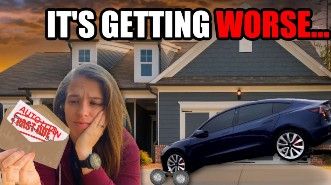
A key group of American borrowers is falling significantly behind on their car loans. It’s yet another sign that the US economy is forming some serious cracks, leaving the most vulnerable in financial distress.
The percentage of subprime borrowers – those with credit scores below 670 – who are at least 60 days late on their car loans has doubled since 2021 to 6.43%, according to Fitch Ratings. That’s worse than during the past three recessions – during the Covid pandemic, the Great Recession or the dot-com bust.
America’s current subprime delinquency rate is at the second-highest level since the early 1990s. The only time it was higher: this past January. Cars are being repossessed at the highest rate since the Great Recession of 2008 and 2009.
It’s a disturbing trend to economists: Car loans are typically the last payments that Americans are willing to miss. They’re too important to their lives: Cars are essential tools to get to work, drive families and access food.
Record car prices and high interest rates, combined with other inflationary pressures, have sent average auto payments to record levels and have put significant stress on car owners.
Although the financial stress on subprime car borrowers has stabilized in 2025 after large increases in late payments and repossessions over the past two years, economists fear what might happen if the labor market grows considerably weaker and layoffs become more common.
For subprime borrowers, the default rate – those whose cars have been or are about to be repossessed – which stood at nearly 10% in September, according to Cox Automotive data. That’s down from a year ago but above the long-term average.
Those borrowers often have no choice but to default. They can’t sell their cars because they owe so much more than it is worth. They often have already missed payments on other obligations, such as mortgage payments or rent, as well as payments due on credit cards and student loans.
“There’s no room for error,” said Jonathan Smoke, chief economist at Cox Automotive.
Just over half of new car leases and more than three-quarters of new car loans made in the second quarter had monthly payments of $500 or more, and 46% of used car loans have payments of $500 or above, according to Experian. For new car loans, more than 17% have payments of more than $1,000.
Repair costs have also surged – at a time when many are holding onto their cars for longer to avoid splurging on a new one. Motor vehicle repair costs surged 15% year-over-year in August, according to the Bureau of Labor Statistics. That’s the most in nearly two years. And repair costs increased 5% between July and August, the biggest monthly increase on record.
Meanwhile, car insurance rates have increased significantly since the pandemic. In August, car insurance rose by the smallest annual rate in three years – but that still amounted to a hefty near-5% jump, well above the overall inflation rate.
The increased costs of owning and maintaining a car aren’t happening in a vacuum: They’re taking place after years of rising prices at the supermarket and across the economy. And two years ago, many student loan payments that were paused during the pandemic became due again. A year ago, delinquent student loan payments started counting against credit scores again, pushing some borrowers into lower credit ratings that could raise the rates they were charged on other loans, including car loans.
Elevated subprime delinquency rates demonstrate how beneath the surface of blockbuster stock market returns and strong overall economic growth, many consumers are hurting.
Tellingly, Americans with stronger credit scores don’t appear to be struggling to make car payments. The delinquency rate among prime borrowers has increased significantly but remains very low at less than 0.5%.
“There are no alarm bells going off for prime borrowers,” said Rod Chadehumbe, chief asset backed securities strategist at Bloomberg Intelligence.
The wide gap between delinquency rates of prime and subprime borrowers is another reminder of the so called K-shaped economy: Many Americans who have money in the stock market and own increasingly valuable homes are doing well and spending aggressively, but many others, especially lower-income consumers, are struggling to stay afloat.
A number of lenders who specialize in subprime car loans expect a growing percentage of their clients to default and have their car repossessed, said Pamela Foohey, a law professor at the University of Georgia and an expert in both auto finance and bankruptcies.
The repo business has been quite active lately. Subprime lenders build GPS features into cars to make it easier for teams repossessing the vehicles to find them, she said. The lenders can even disable the ignition of the cars to prevent owners from driving them once they’ve defaulted on the loan.
“The (repo) numbers indicate it’s probably close to the Great Recession in volume,” said George Badeen, who runs Midwest Recovery and Adjustment in Detroit, and is also president of one of his industry’s trade groups. “It’s a target-rich environment at the moment.”
Source: CNN
What's New -October 2025
Posted Tuesday, September 30, 2025

Sales
- New Default: Maximum Profit Cap for Vehicle Service Contracts
A new default setting has been added in the Sales screen (line 6) to manage the Maximum Profit Cap for Vehicle Service Contracts (VSC).
In addition to your existing maximum pricing, this setting allows you to control VSC profit by:
- A flat dollar cap, or
- A percentage of VSC cost
This gives your team more flexibility and ensures consistent profit margins on service contracts.
- California DMV Link Update: Automatic Repo Fee Box
For California users, the DMV Link has been enhanced for greater accuracy.
If a vehicle is already marked as a repossession in DMV Title Info (line 7), the system will now automatically mark the Repo Fee box (line 1) in the pop-up screen.
This automation helps reduce errors and ensures repossession-related fees are applied correctly.
Contract Screen
- New Feature: Expanded Sub-Category Options in Contract Tab
We’ve added more flexibility when setting up custom sales forms in the Contract tab.
When a form is tied to the “Sales Contract” category, you now have expanded Sub-Category options. This allows you to link forms directly to specific VSC products, such as:
- Bundle
- Dent
- Key/Tire
- Maintenance
- Warranty
This update makes it easier to organize, track, and manage the exact products tied to each sales contract, giving your team more precision and control.
Inventory
- New Default Setting: Automatic Stock Location
A new default option has been added in Miscellaneous Defaults:
- Line 21: Set a default Location for new inventory (Inventory tab, line 40).
When enabled, any new vehicle added to stock will automatically be assigned to this default location, saving time and ensuring consistency across your inventory records.
Shop
- New Shop Feature: Global Appointments/Reminders
When adding shop appointments, you now have a new option: Global App/Reminder.
By selecting this option, the appointment description will appear in the Appts/Reminder tab, regardless of which scheduler is selected. This ensures that everyone with access to the appointment list can see it, improving visibility and communication across your team.
- New Shop Feature: Quantity Option for Fees in Kits
When designing kits in the Shop module, you now have the option to assign a quantity for fees.
For example, if you create a kit for 4 tires, you can not only set the proper labor hours but also automatically adjust related fees, such as environmental disposal fees, based on the tire count.
This update ensures more accurate estimates and invoicing while saving your team time.
- New Service Shop Feature: Pending PO Parts Tracking
For Service Shop users, the Pending POs screen now includes a new column indicating which POs have received parts.
This allows your accounting staff to track received items and avoid posting incomplete invoices in your accounting system. If a user attempts to post a PO with all or some parts still unreceived, a prompt reminder will appear, giving the option to either:
- Confirm and post the invoice anyway, or
- Wait until all parts are received.
This update helps reduce errors and ensures your accounting records accurately reflect received inventory.
Bookkeeping
- New Bookkeeping Feature: “Add New Loan” Adjustment
A new adjustment type has been added in the Bookkeeping – Adjustment tab: Add New Loan.
This option is designed for situations where a customer has an open receivable balance and makes an agreement to finance it. With this feature, you can:
- Select all outstanding invoices from the list.
- Save and enter the details of the agreed financing.
- Manage the customer’s account going forward in the Financed Loan screen.
This streamlines the process of converting receivables into financed loans and keeps all records organized in one place.
ASN CRM
- CRM & Shop Enhancements: Invest in Your Success
The latest update brings several powerful improvements to ASN CRM and Shop:
-
Texting Log: A new way to view and track text conversations with your sales leads.
-
Task Management: Enhanced tools to organize and group tasks by key factors, helping your team prioritize effectively.
-
Navigation & Shop Features: Multiple enhancements for smoother workflows and better usability.
These updates are designed to save time, improve communication, and support your dealership’s success. Take a few moments to review the new features — it’s an investment in your own efficiency.
And remember, our CTech Support Message is only a click away if you have any questions.
Latest System Update
-
The Upcoming version is 7.0.18.69 —Our newest update is rolling out in phases. If you don’t see it yet, no action is needed; it will arrive automatically. Once updated, you’ll have access to the latest features and improvements to keep your system running at its best.
Driving Growth: Lead Generation Strategies for Dealers in 2025
Posted Tuesday, September 30, 2025

Generating quality leads has always been a top priority for dealerships, but in today’s digital-first market, the rules have changed. Buyers are researching longer, engaging through more channels, and expecting a seamless online-to-showroom experience. To stay ahead, independent dealers need to combine strong digital strategies with authentic community engagement — supported by the right technology.
Digital & Content Strategies
- Website Optimization: Your website is your online showroom. Make sure it’s mobile-friendly, fast, and has clear calls to action. With ASN’s inventory features, every vehicle listing is automatically optimized with detailed data, images, and keywords to boost your SEO and help you rank higher in local searches.
- AI-Powered Lead Responses: Timing is everything. ASN’s AI-driven lead responses provide instant, consistent communication with prospects — acknowledging inquiries within seconds and keeping engagement alive until your sales team takes over.
- CRM Lead Management: ASN CRM centralizes all lead activity — from website forms and chat to third-party marketplaces — so your team can track, nurture, and convert every opportunity. Built-in tools help assign, prioritize, and follow up, ensuring no lead slips through the cracks.
- Social Media Presence: Regular posts and vehicle walkarounds on platforms like Facebook, Instagram, and TikTok help you connect directly with shoppers. ASN integrates inventory feeds with popular marketplaces and social channels, making it easy to promote your vehicles where customers are already looking.
- Paid Search & Retargeting Ads: ASN inventory exports include structured vehicle data to improve performance in Google Ads and third-party retargeting campaigns. That means higher visibility and better ROI from your marketing spend.
- Email & SMS Campaigns: Automated follow-ups, price-drop alerts, and service reminders can all be managed directly from ASN CRM, helping you stay in touch with customers at every stage of the journey.
Community & Offline Tactics
- Local Partnerships: Collaborate with local businesses — for example, offering a gift card with every test drive — and promote it through ASN’s email/SMS tools to maximize awareness.
- Event Sponsorships: Sponsor local sports or charity events. ASN’s CRM makes it easy to capture and manage new leads you meet in the community.
- Referral Programs: Reward satisfied customers who refer new buyers. With ASN, referral tracking and reward fulfillment can be tied into your CRM process.
Customer Experience & Engagement
- Live Chat & AI Assistants: Use ASN-integrated chatbots to capture leads in real time and answer common questions 24/7.
- Customer Reviews: Encourage customers to leave reviews. ASN CRM helps you automate review requests via text or email after a sale or service visit.
- Re-Engage Past Prospects: Use ASN CRM to identify and follow up with past leads or customers who haven’t purchased in a while.
The Bottom Line
The most effective dealers in 2025 will be those who connect with customers wherever they are — online, in the community, or at the dealership. With ASN Software, you don’t just get a DMS, you get an entire ecosystem built to grow your dealership: AI lead responses, robust CRM lead management, inventory tools that boost SEO, and integrated communication channels. Together, these features help you capture, nurture, and convert more leads into loyal customers.
Source: ASNAI
Preserving OFAC Records For 10 Years
Posted Tuesday, September 30, 2025

Dealers are reminded that Office of Foreign Assets Control (OFAC) records must be preserved for 10 years. These records should be stored in cold storage—secure, offline, and protected from alteration—to ensure both compliance and data integrity.
Maintaining proper OFAC records is more than just a regulatory requirement. It demonstrates your dealership’s commitment to safeguarding customer information, supporting due diligence, and reducing compliance risks.
Best practices include:
- Archiving OFAC records in secure, offline systems.
- Verifying backups to ensure they remain accessible and unaltered.
- Scheduling regular audits to confirm compliance.
By preserving these records correctly, your dealership stays aligned with federal requirements and avoids potential penalties while ensuring accountability and trust.
Footnote: ASN already requires OFAC records to be preserved in your system indefinitely, so you remain fully compliant with the 10-year storage requirement.
Source: OFAC-Treasury
Lendbuzz Files for IPO
Posted Tuesday, September 30, 2025

Auto finance company Lendbuzz has filed a registration statement on Form S-1 with the US Securities and Exchange Commission (SEC) for a proposed initial public offering (IPO).
The Boston-based fintech, which uses AI to assess loan applications for car buyers with limited credit history, plans to list its common stock on the Nasdaq Global Select Market under the ticker symbol LBZZ.
In a statement on the filing, Lendbuzz confirms that the amount of common stock and the price range for the proposed listing "have not yet been determined", while the move remains subject to SEC approval. "There can be no assurance as to whether or when the offering may be completed, or as to the actual size or terms of the offering," the statement continues.
Lendbuzz has enlisted Goldman Sachs, JP Morgan, RBC Capital Markets, and Mizuho as lead book-running managers for the proposed offering, while TD Securities, Citizens Capital Markets, Keefe, Bruyette and Woods, and Needham and Company are to act as passive bookrunners.
The company, founded in 2015 by CEO Amitay Kalmar and CTO Dan Raviv, previously worked with these four lead bookrunners during a $262 million asset-backed securitisation in January this year. Prior to this, Lendbuzz bagged $400 million through a forward flow programme inked with Viola Credit in August 2024.
Source: Fintech
Hertz is now selling used vehicle inventory on Amazon Autos
Posted Tuesday, September 30, 2025

The company is offering used vehicles at non-negotiable prices, often below Kelley Blue Book suggested retail value.
Dive Brief:
- Hertz Car Sales is now selling pre-owned vehicles on the Amazon Autos marketplace, the company announced in a press release.
- Customers can browse a nationwide inventory of thousands of used Hertz rental fleet vehicles, apply for financing and finalize their purchase directly on Amazon Autos. Available vehicles within 75 miles of the customer will be shown, and once a purchase is complete, buyers can schedule for pickup at a nearby Hertz Car Sales location.
- The initial rollout of online Hertz used vehicle sales is available in Dallas, Houston, Los Angeles and Seattle, with plans to expand to all 45 of Hertz Car Sales locations nationwide, per the release.
Dive Insight:
Hertz Car Sales is a division of the Hertz Corporation that sells used vehicles that were previously part of Hertz car rental fleet in the U.S. Its partnership with Amazon Autos aligns with Hertz’s strategy of expanding its digital retail presence and making its used vehicle inventory more accessible to customers nationwide.
“Our goal is to reimagine the car-buying experience and meet customers where they are – whether online or in person – with convenience, confidence and scale,” Jeff Adams, executive vice president of Hertz Car Sales, in the release.
Hertz is offering its used inventory at competitive prices, often below Kelley Blue Book suggested retail value, according to the release. The company lists all vehicles with a no-haggle price.
The majority of vehicles offered by Hertz Car Sales are late models, including sedans, compact SUVs and other luxury vehicles selected from Hertz’s rental companies, including Dollar Rent-a-Car, Thrifty Rental and Donlen, according to the company. Hertz also operates a wholesale business-to-business platform called “Hertz Dealer Direct” that sells vehicles directly to automobile dealerships. Its new partnership with Amazon Autos will help Hertz reach a larger number of potential car buyers.
“Amazon Autos is the ideal partner to help us deliver on this as customers can shop our expansive inventory of high-quality used cars on the same trusted marketplace where millions shop every day,” Adams said.
For greater transparency, all Hertz used vehicles undergo a 115-point inspection prior to being listed and are be backed by a?12-month/12,000-mile limited powertrain warranty. Amazon Autos also offers detailed vehicle history and condition reports for each marketplace listing. In addition, customers receive ?24-hour roadside assistance, and a?7-day/250-mile buy-back guarantee if they are unhappy with the vehicle.
“This collaboration allows us to offer an expanded selection of well-maintained vehicles from more dealerships across the country, while maintaining the simplicity that customers expect from Amazon,” said Fan Jin, global head of Amazon Autos, in the release.
The retail partnership between Amazon and Hertz follows Hyundai Motor America’s announcement this month that it would begin selling certified pre-owned vehicles on Amazon Autos. Hyundai became the first automaker to offer new vehicles on Amazon Autos when the online marketplace launched last December.
We’re covering the news relevant to you.
Jin told Automotive Dive earlier this month that customers have been asking for more choices on Amazon Autos, including purchasing vehicles from other OEMs besides Hyundai, since the marketplace launched in December.
Amazon Autos is now available in 130 U.S. cities, including New York, Boston, Miami, Chicago, Los Angeles, Seattle, San Francisco and other major metropolitan areas.
Source: Automotivedive
What's New -September 2025
Posted Monday, September 1, 2025
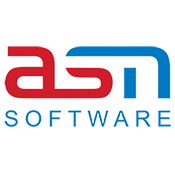
Sales
Bushing occurs when a dealer attempts to change the terms of a purchase order agreement, often referred to as “spot delivery” or “yo-yo” sales. This new feature is designed to help you document and monitor these situations more effectively
Contract Screen
-
New Feature – AutoCheck eSign Integration
You can now add the eSign option for AutoCheck reports directly to the contract screen. When enabled, the report can capture a customer’s electronic signature for acknowledgment.
Please note: An authorized AutoCheck account is required to use this feature.
-
New DMV Registration Interface – DLRdmv
We’ve added a new interface source for DMV registration: DLRdmv. This private company provides software and services that streamline the vehicle title and registration process for dealerships by integrating directly with state DMVs.
Key highlights:
-
Nationwide Expansion – Services now available in all 50 states.
-
Out-of-State Titling – Their DLR50 program simplifies out-of-state titling and registration.
-
eTitling – A leading provider of electronic titling in several states.
-
Dealer-Focused – Designed for dealerships, not the public, enabling customers to receive plates right at the time of purchase.
This integration brings increased speed and convenience to your title and registration process, enabling you to better serve your customers. This service requires a new subscription which you can find in DealerZone- ASN Services.
Inventory
- Inventory In-Date Enhancements- We’ve added new tools to help you manage vehicle In-Dates more accurately:
-
Settings Option – In Defaults > Miscellaneous (line 13), you can now choose to leave the In-Date field blank and update it once the vehicle actually arrives.
-
CRM Digital Recon – A new Edit button in the In-Date field allows authorized techs to update the date directly from the Digital Recon inspection screen.
These improvements give you greater flexibility and accuracy in tracking your inventory.
Shop
- RO Updates Alert- Service writers can now capture a customer’s communication preference (text, email, or both) during the CRM check-in process. This preference is stored for the current Repair Order and will automatically send notifications once the RO is dispatched, keeping customers informed the way they prefer, without extra steps.
This makes communication smoother, saves time, and ensures customers stay informed their way.
- Repair Order TAGs- We’ve added a new Active column to the Tags_Master along with Activate/Deactivate buttons in the Tag Management screen. This lets you inactivate tags you no longer wish to use—without deleting them.
Custom reports will continue to display the correct tags on past ROs, whether the tags are active or inactive, ensuring historical accuracy while keeping your tag list clean.
- Shop Update – Part Reservation Alert- To inform when the system prevents duplicate part usage, a new message will now display if a shop user attempts to pick a part that has already been reserved by another user. The alert will include the related RO# and Part ID# for quick reference.
- New Payment Option – PayPal “Pay Later”- Service shop clients now have the option to let customers pay using PayPal’s “Pay Later” feature.
This gives customers more flexibility when they don’t have funds available at the time of service, while ensuring you receive faster, more reliable payments.
To enable this feature, go to ASN CRM > Settings > Other tab > PayPal Settings and complete the signup process.
Bookkeeping
- Flooring Clients- In Receive Money Screen- A new option is now available when posting dealer payments—you can apply payments as “Interest-Only Payment.” This adds to the right-click menu in the Receive Payment screen, bringing the total to 10 choices for even greater flexibility in managing dealer accounts.
ASN CRM
ASN Payment Portals
-
ASN Payment Site Update
A new enhancement has been added to the Account Summary page for customers with multiple accounts. In addition to the existing account switch option, the summary now displays:
This gives customers a clearer view of their overall account status at a glance.
Latest System Update
-
The Upcoming version is 7.0.18.62 —Our newest update is rolling out in phases. If you don’t see it yet, no action is needed; it will arrive automatically. Once updated, you’ll have access to the latest features and improvements to keep your system running at its best.
Driving Forward: A Labor Day Message for Independent Auto Dealers
Posted Friday, August 29, 2025

As we celebrate Labor Day, we are reminded that this holiday is more than a long weekend—it is a tribute to the hard work, perseverance, and entrepreneurial spirit that built America. Nowhere is that spirit more alive than in the independent auto dealer community.
Every day, independent dealers across the country take on challenges that larger franchises may never face: tighter margins, tougher competition, and the constant demand to deliver personalized service. Yet, it is this very grit and dedication that makes you the heartbeat of local communities. Families rely on you to provide affordable, reliable vehicles, and you do it with honesty, hustle, and pride.
Labor Day gives us an opportunity to pause and recognize that your work is not just about selling cars—it is about creating opportunities. Whether it’s helping a first-time buyer get financing, putting a family in a safer vehicle, or employing local talent in sales, service, and administration, your business is a cornerstone of both the economy and the community.
As the industry continues to evolve—through technology, financing, and customer expectations—your adaptability will remain your greatest advantage. Just as this holiday honors those who built the future through hard work, independent auto dealers are building the road ahead for their customers and their communities.
This Labor Day, take pride in your role as innovators, problem-solvers, and community builders. The work you do matters, and it fuels more than just your dealerships—it fuels progress.
Here’s to the independent spirit, the hard work, and the drive that keep America moving.
Happy Labor Day from all of us at ASN Software.
Used Wholesale Prices Slide
Posted Friday, August 29, 2025
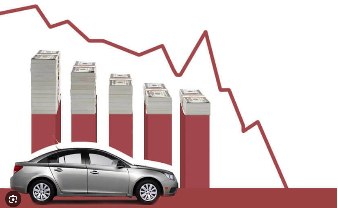
Wholesale used-vehicle prices (on a mix-, mileage-, and seasonally adjusted basis) decreased from July in the first 15 days of August. The mid-month Manheim Used Vehicle Value Index fell to 206.5, showing a rise of only 1.2% from the full month of August 2024. The seasonal adjustment was responsible for the decline in the index in the month, as it was higher than typically seen. The non-adjusted price change in the first half of August rose 0.6% compared to July, and the unadjusted price is higher by 1.3% year over year. The average move for the full month of August is a small rise of 0.1 percentage points for non-adjusted values, indicating the pricing moves observed so far in August are stronger than normally seen for the full month. August 2024 showed abnormally strong price appreciation, making the comparison more difficult on a year-over-year basis.
“We started to see stronger sales trends in late July and early August for retail and wholesale markets, and that’s causing some additional volatility in wholesale pricing trends in recent weeks, against a stronger comparison from last year,” said Jeremy Robb, senior director of Economic and Industry Insights at Cox Automotive. “In the first two weeks of August, non-seasonally adjusted prices are appreciating more than usual, though the seasonal adjustment was a bit stronger, causing the index to decline at the mid-month point. Used retail supply has further tightened in recent weeks to the tightest level since early April, and that is keeping buyers active at Manheim to replenish inventory. While the tariffs induced much volatility in the automotive market earlier this year, we still see solid demand for both retail and wholesale vehicles.”
Over the last two weeks, the Manheim Market Report (MMR) prices for the Three-Year-Old Index showed no change overall, as values fell in the first week of August and rose in the second. The long-term average decline for 3-year-old values in the first two weeks of August is a decline of 0.3%. Over the first 15 days of August, MMR Retention, the average difference in price relative to current MMR, averaged 99.8%, showing stronger pricing trends over the first half of the month. This is a rise of 0.6 points from late July, indicating that market prices moved closer to valuation models early in August. MMR retention is flat compared to the first half of August 2024, another period when demand was elevated at Manheim. The average daily sales conversion rate of 61.8% in the first half of the month was half a point lower than last year’s level of 62.3%, but over 5 points higher than the end of July.
Source: Used Car News
FTC drops complaint against dealer to comply with disparate impact order
Posted Friday, August 29, 2025

The Federal Trade Commission has dropped its claims of discrimination against three Texas car dealerships to comply with an executive order issued by President Donald Trump.
According to court documents, the FTC pulled back its 2024 claim that Asbury Automotive Group’s David McDavid Ford of Fort Worth, David McDavid Honda of Frisco and Irving had discriminated against Black and Latino consumers in charging more for add-ons.
Asbury denied the discriminatory allegations along with the FTC’s complaint that it charged customers hidden fees for unwanted add-ons and filed a suit against the agency.
While dropping the discriminatory complaint, the FTC is continuing its case on the hidden fees and unwanted add-ons.
Trump’s April Executive Order, which rejects the use of the “disparate impact” theory of liability by federal agencies, triggered the dropping of the discriminatory complaint.
The complaint relied on the longstanding legal doctrine used to identify discrimination under the Civil Rights Act of 1964. Disparate impact occurs when a seemingly neutral policy or practice disproportionately harms a protected group, even absent discriminatory intent.
While the Executive Order does not alter statutory civil rights protections, it directs federal agencies to “deprioritize” enforcement actions based on disparate impact, labeling the theory as an “unlawful” basis for regulatory action.
In its court filings, the FTC stated it was abandoning the claims “out of an abundance of caution” to comply with the directive.
“The move signals a significant shift in federal civil rights enforcement strategy and raises questions about the future of disparate impact as a regulatory tool for the foreseeable future,” said NIADA CEO Jeff Martin. “While NIADA supports this new regulatory and enforcement posture at the federal level, we remind dealers that failure to comply with fair lending laws and regulations carries significant risk and strongly encourage dealers and lenders to adhere to policies and practices that support equal access to credit for all.”
Source: NIADA
The impacts of tariffs on automaker
Posted Friday, August 29, 2025
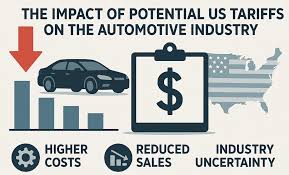
New tariffs levied by the Trump Administration on a wide variety of vehicle components are taking its toll on automakers. OEMs now face challenges in shoring up their supply chains to help mitigate the impact.
Several automakers have already adjusted their full-year guidance or posted big quarterly losses in the first half of the year due to uncertainties around tariffs, which may continue for the remainder of 2025. Ford Motor Co., for example, took out a $3 billion loan amid tariff uncertainties. General Motors reported a $1.1 billion tariff impact in Q2
Ford takes out $3B loan amid tariff uncertainty.
The unsecured loan signals confidence from lenders, although the automaker’s current credit rating indicates its business is vulnerable to adverse economic conditions.
GM CFO looks to strategic pricing, costs to blunt $1.1B tariff impact
Trade deals with South Korea, Mexico and Canada will be important for the automaker’s future, the executive said Tuesday.
Toyota reports $3.3B drop in Q1 net income as tariffs take hold
The automaker expects that the impact of tariffs on its operating income for the remainder of FY2026 will be $9.5 billion.
Stellantis posts first-half losses in ‘tough’ year
The company’s U.S. tariff hit heads up the automaker's reasons for its predicted $2.7 billion overall loss for 2025.
Volkswagen takes $1.5B hit from tariffs
The auto group was forced to trim its full-year earnings forecast and “realign” its business model, possibly focused on less U.S. trade, executives said.
Subaru forecasts a 50% profit decline for FY2026
Despite the impact of tariffs on its bottom line, the automaker’s quarterly sales in the U.S. increased by 25,000 units
Source: Automotivedive